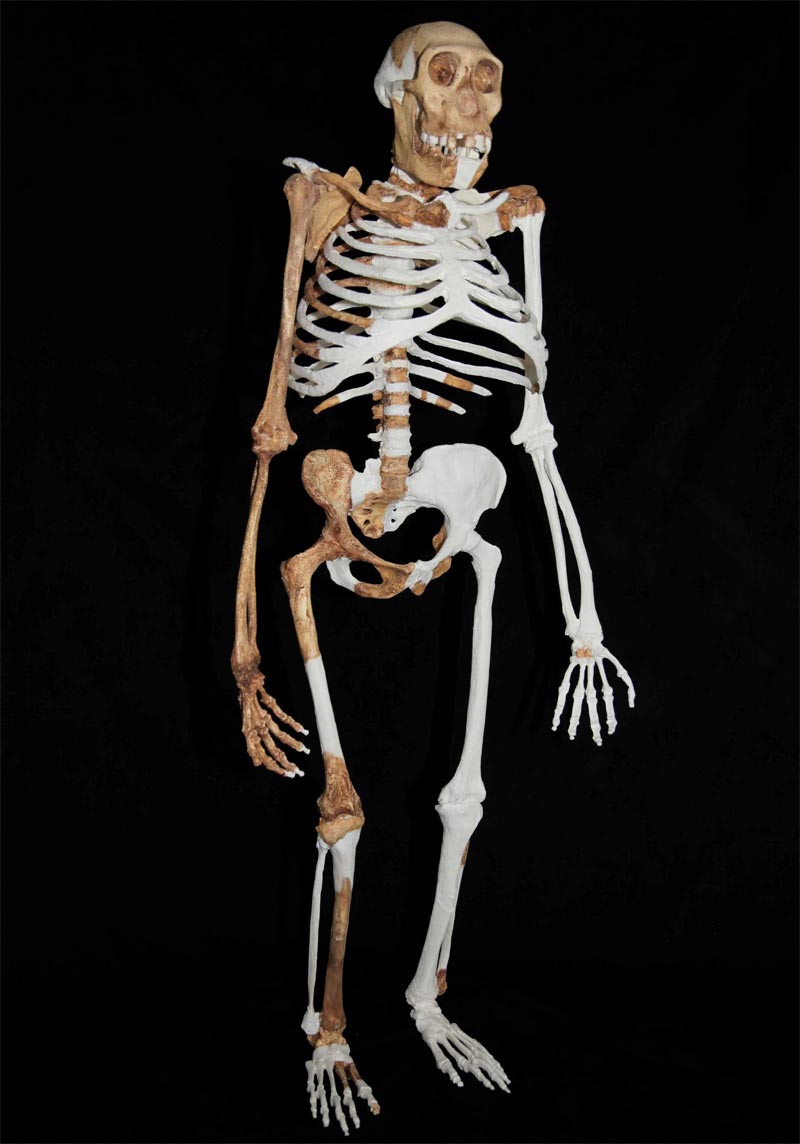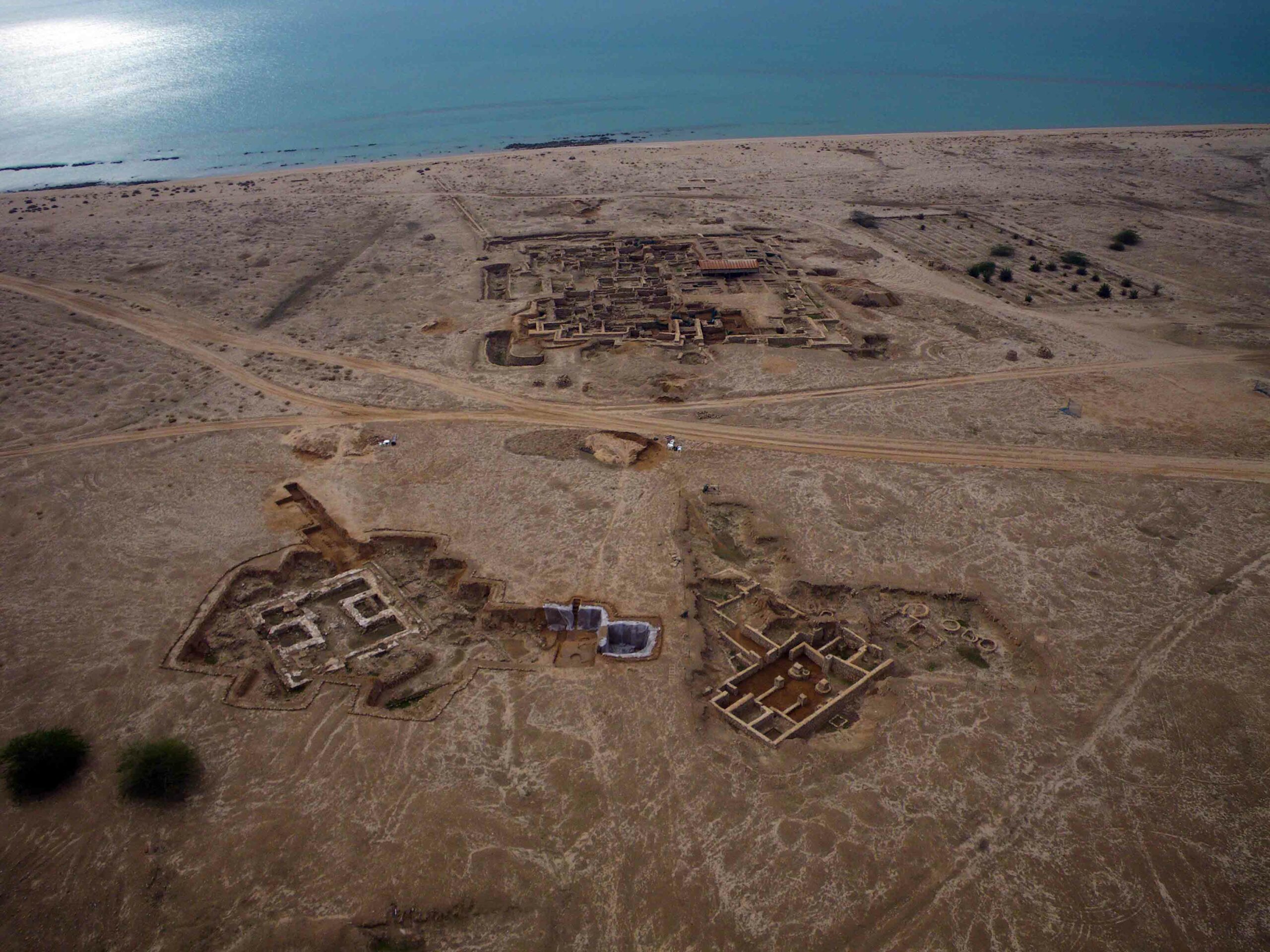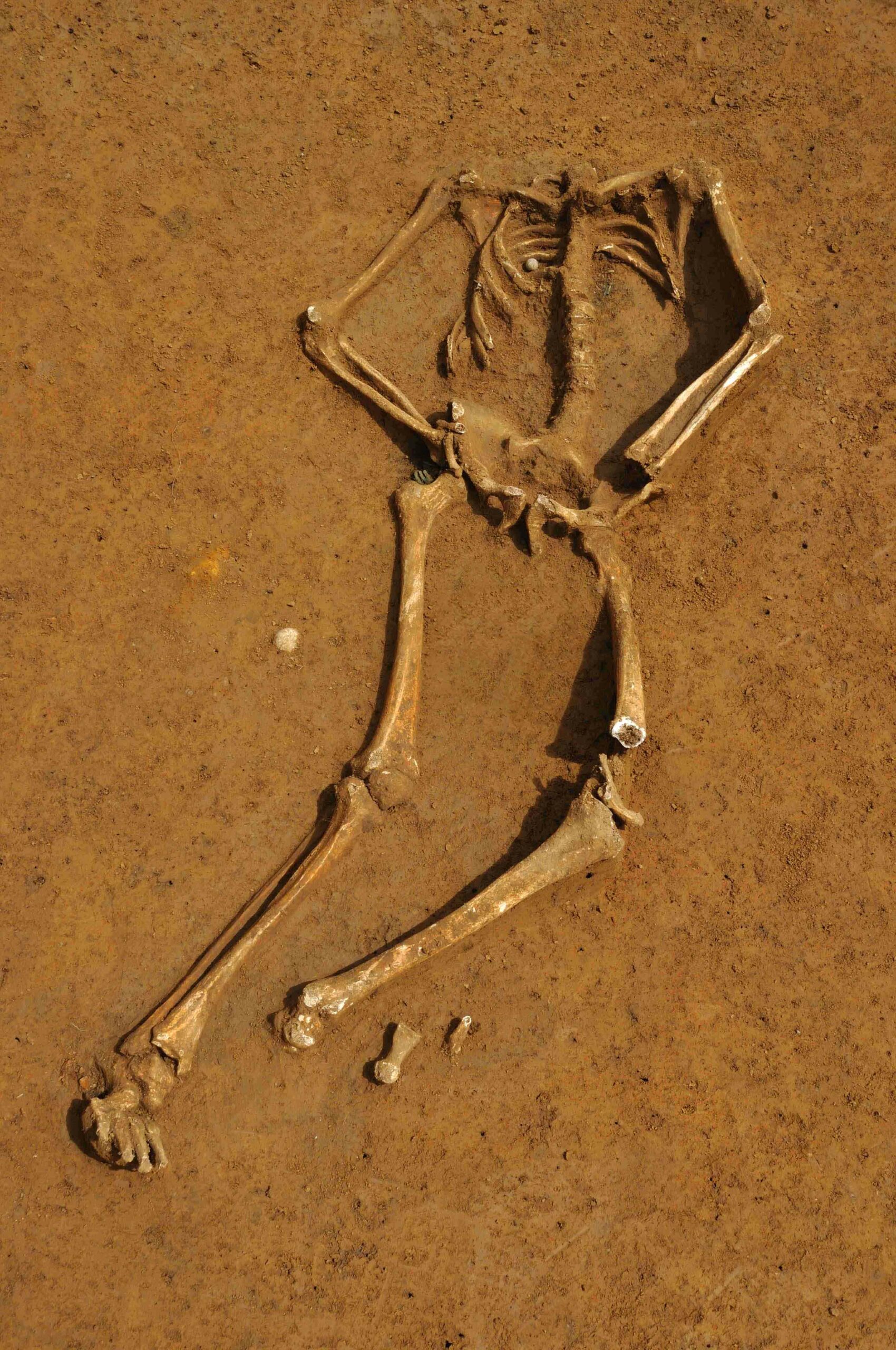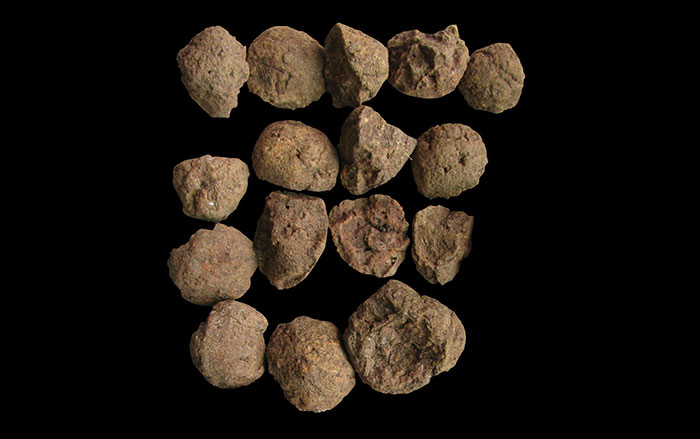
WASHINGTON, D.C.—A collection of papers published in the current issue of Science represents the most complete investigation of Australopithecus sediba fossils to date. Discovered in 2008 in South Africa, scientists think that the two-million-year-old hominin may be the oldest direct ancestor of the human lineage. Its long, apelike arms and shoulder blades would have been good for climbing, and its fingers would have been capable of powerful grips. But Australopithecus sediba fingers may also have been able to make and use tools, although no tools associated with the fossils have been found so far. Its legs, trunk, and lower back suggest that Australopithecus sediba was able to climb trees and walk with a primitive, pigeon-toed gait. “These skeletons are just interesting, wonderful blends of characteristics,” said evolutionary anthropologist Steven Churchill of Duke University. Click here for more photos of the Australopithecus sediba composite skeleton.










